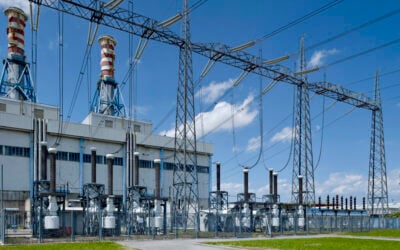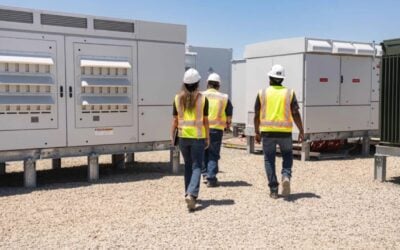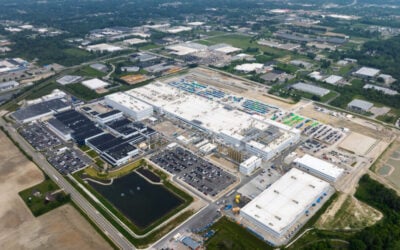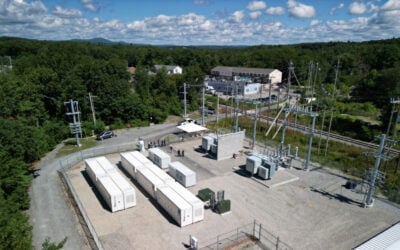
Utility NV Energy has received state regulatory approval of a group of PPAs with a cumulative storage capacity exceeding 1GW as part of the investor-owned utility’s (IOU’s) 2024 Integrated Resource Plan (IRP).
The Public Utilities Commission of Nevada (PUCN) approved the agreements on 20 December 2024 following months of scrutiny after NV Energy’s initial submission on May 31 2024, as covered in Energy-Storage.news.
Enjoy 12 months of exclusive analysis
- Regular insight and analysis of the industry’s biggest developments
- In-depth interviews with the industry’s leading figures
- Annual digital subscription to the PV Tech Power journal
- Discounts on Solar Media’s portfolio of events, in-person and virtual
PPA with Arevia Power for 2.8GWh hybrid BESS
The largest portion of the cumulative battery capacity will come from the Libra Solar and BESS project located in Mineral County, Nevada that will pair a 700MW solar farm with a 700MW/2,800MWh BESS.
NV Energy has negotiated a 25-year power purchase agreement (PPAs) PPA with the owner of the project, independent power producer (IPP) Arevia Power, that’s contracted to commence delivery during December 2027. Under the terms of the deal, NV Energy will pay the developer US$13,350/kW-month for storage during the first 20 years, with storage during the final five years available to the utility at no cost.
The two parties negotiated a flat energy price of US$34.97/MWh associated with the solar component of the project for the entire 25-year contract term.
In September this year, the US Bureau of Land Management (BLM) issued Arevia Power a right-of-way grant allowing for the construction and operation of the Libra project after completing an environmental assessment of the plans. The project will encompass 5,141 acres of BLM-managed public land connecting to NV Energy’s electricity grid via the utility’s Fort Churchill substation in Lyon County, Nevada.
Dry Lake East and Boulder Solar III
The PUCN also approved PPAs incorporating storage from two separate projects under development by IPPs NextEra Energy Resources (NEER) and 174 Power Global.
Under the first PPA, NV Energy will pay NEER US$13,440/kW-month for the battery portion of the developer’s Dry Lake East project, made up of a 200MW solar farm co-located with a 200MW/800MWh BESS located in Clark County, Nevada. NV Energy is set to pay a flat price of US$36.78/MWh for energy from the solar component.
The 25-year PPA is set to commence during December 2026.
The third and final PPA incorporating storage is associated with 174 Power Global’s Boulder Solar III project comprising 127.9MW of both solar and storage located in Boulder City, Nevada.
Similarly to the Libra agreement, NV Energy will pay the developer a rate of US$15,460/MW-month for storage for the first 20 years of the contract, with the final five years available to the utility at zero cost. NV Energy will pay a flat rate of US$34.60/MWh for energy from the solar portion of the project, which along with the BESS, is scheduled to reach commercial operations in June 2027.
Along with the three PPAs incorporating storage, the Nevada regulator also approved a fourth contract between NV Energy and geothermal specialist Fervo Energy, associated with a 115MW geothermal generation station, dubbed the Corsac project.
Concerns of environmental advocacy groups ignored
The PUCN also approved a proposal submitted by NV Energy to add two new 200MW methane (natural) gas-fired power plants to its portfolio at an estimated cost of US$575.3 million, with the state regulator choosing to ignore the concerns of several environmental advocacy groups.
Within the recent filing, NV Energy stated that although it was requesting approval of new fossil fuel generation, it was not deviating away from its clean energy goals, as it would be removing coal from its portfolio by the end of 2025 – referring to its final coal-burning Valmy North Generating Station.
However, instead of moving away from burning fossil fuels at the site, NV Energy received approval from the PUCN earlier in 2024 to convert the North Valmy plant to run on gas. Not only is this a paradoxical move, but it also differs from the actions of other utilities across the US, such as DTE Energy in Michigan, who are choosing to replace legacy power plants with BESS.
The soon-to-be-converted North Valmy station is also the proposed location for the two recently-approved 200MW gas generating turbines.
“Similarly sized BESS could offer greater overall benefits”
Advocacy groups Sierra Club, Advanced Energy United, Western Resource Advocates (WRA) and Interwest Energy Alliance all asked the PUCN to deny NV Energy’s request for more gas generation, with WRA accusing the utility of not making “any real efforts to consider clean resource alternatives.”
Advanced Energy United made the suggestion to delay approval of the new gas plants in order to carry out further analysis of alternatives, adding that this was especially important since “a similarly sized BESS could offer greater overall benefits.”
Despite these suggestions, the PUCN concluded that renewable energy resources, such as solar plus BESS, could not be compared to the new Valmy additions due to them being “unable to run at any given time.”
An independent advisory group, known as the regulatory operations staff, whose job is to balance the interest of Nevada ratepayers and utility stakeholders, added within the recent filing that there are “no viable long-term storage options that could enable renewable energy to be stored and supplied 24 hours a day”.
The group added that solar and storage facilities are not capable of meeting the demand of year-round loads caused by activities such as mining and data centers.
Alternative approach across the state border
Despite these comments, other utilities across the US are opting for a much less environmentally damaging approach when it comes to powering data centers.
As recently covered in Energy-Storage.news, it was announced that Ørsted’s 300MW Eleven Mile Solar and Storage project in Nevada had been brought online, with the “majority” of the power generated by the plant set to be used at a Meta-owned data center in Mesa.






